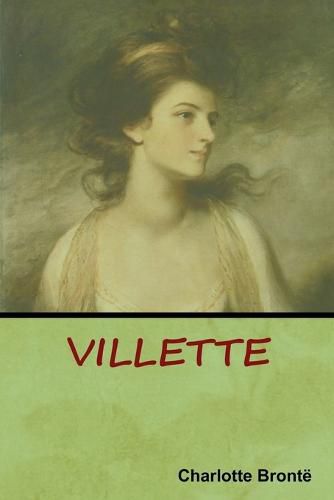Readings Newsletter
Become a Readings Member to make your shopping experience even easier.
Sign in or sign up for free!
You’re not far away from qualifying for FREE standard shipping within Australia
You’ve qualified for FREE standard shipping within Australia
The cart is loading…






This title is printed to order. This book may have been self-published. If so, we cannot guarantee the quality of the content. In the main most books will have gone through the editing process however some may not. We therefore suggest that you be aware of this before ordering this book. If in doubt check either the author or publisher’s details as we are unable to accept any returns unless they are faulty. Please contact us if you have any questions.
Villette is an 1853 novel written by English author Charlotte Bronte. After an unspecified family disaster, the protagonist Lucy Snowe travels from her native England to the fictional French-speaking city of Villette to teach at a girls’ school, where she is drawn into adventure and romance.
Villette was Charlotte Bronte’s third and last novel; it was preceded by The Professor (her posthumously published first novel, of which Villette is a reworking), Jane Eyre, and Shirley.
In 1842 Charlotte Bronte, at the age of 26, travelled to Brussels, Belgium, with her sister Emily. There they enrolled in a pensionnat (boarding school) run by M. and Mme. Constantin Heger. In return for board and tuition, Charlotte taught English and Emily taught music.
The sisters’ time at the pensionnat was cut short when their aunt, Elizabeth Branwell, died in October 1842. Elizabeth had joined the Bronte family to care for their children after the death of Maria Bronte, nee Maria Branwell, the mother of the Bronte sisters.
Charlotte returned, alone, to Brussels in January 1843 to take up a teaching post at the pensionnat. Her second stay in Brussels was not a happy one. She became lonely and homesick, and fell in love with M. Heger, a married man. She finally returned to her family’s rectory in Haworth, England, in January 1844.
Charlotte drew on this source material for her first (albeit unsuccessful) novel The Professor. After several publishers had rejected it, Bronte reworked the material and made it the basis of Villette. Most literary historians believe that the character of M. Paul Emanuel is closely based upon that of M. Heger. Furthermore, the character of Graham Bretton is widely acknowledged to have been modelled upon Bronte’s publisher, George Murray Smith, who was her suitor at one time.
The novel is initially set in the English countryside, and later follows Lucy Snowe to the fictional Belgian town of Villette, a Gothic town where the majority of the action takes place. Villette is modelled upon the city of Brussels and is set in the fictional kingdom of Labassecour (modelled on Belgium). Labassecour is the French word for farmyard. (wikipedia.org)
$9.00 standard shipping within Australia
FREE standard shipping within Australia for orders over $100.00
Express & International shipping calculated at checkout
This title is printed to order. This book may have been self-published. If so, we cannot guarantee the quality of the content. In the main most books will have gone through the editing process however some may not. We therefore suggest that you be aware of this before ordering this book. If in doubt check either the author or publisher’s details as we are unable to accept any returns unless they are faulty. Please contact us if you have any questions.
Villette is an 1853 novel written by English author Charlotte Bronte. After an unspecified family disaster, the protagonist Lucy Snowe travels from her native England to the fictional French-speaking city of Villette to teach at a girls’ school, where she is drawn into adventure and romance.
Villette was Charlotte Bronte’s third and last novel; it was preceded by The Professor (her posthumously published first novel, of which Villette is a reworking), Jane Eyre, and Shirley.
In 1842 Charlotte Bronte, at the age of 26, travelled to Brussels, Belgium, with her sister Emily. There they enrolled in a pensionnat (boarding school) run by M. and Mme. Constantin Heger. In return for board and tuition, Charlotte taught English and Emily taught music.
The sisters’ time at the pensionnat was cut short when their aunt, Elizabeth Branwell, died in October 1842. Elizabeth had joined the Bronte family to care for their children after the death of Maria Bronte, nee Maria Branwell, the mother of the Bronte sisters.
Charlotte returned, alone, to Brussels in January 1843 to take up a teaching post at the pensionnat. Her second stay in Brussels was not a happy one. She became lonely and homesick, and fell in love with M. Heger, a married man. She finally returned to her family’s rectory in Haworth, England, in January 1844.
Charlotte drew on this source material for her first (albeit unsuccessful) novel The Professor. After several publishers had rejected it, Bronte reworked the material and made it the basis of Villette. Most literary historians believe that the character of M. Paul Emanuel is closely based upon that of M. Heger. Furthermore, the character of Graham Bretton is widely acknowledged to have been modelled upon Bronte’s publisher, George Murray Smith, who was her suitor at one time.
The novel is initially set in the English countryside, and later follows Lucy Snowe to the fictional Belgian town of Villette, a Gothic town where the majority of the action takes place. Villette is modelled upon the city of Brussels and is set in the fictional kingdom of Labassecour (modelled on Belgium). Labassecour is the French word for farmyard. (wikipedia.org)